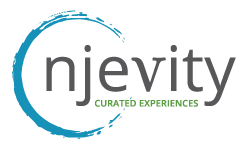Rolling out CRM: Who should take ownership?
Today we welcome Microsoft Dynamics CRM MVP Umar Khan who is a Business System Consultant for SISCOM in Saudi Arabia. You can read more from Umar at http://umarkhan.wordpress.com. Umar also spends time in the Dynamics Forums answering your questions.
It is always a tricky responsibility, who should take the ownership of not only the successful implementation of Microsoft Dynamics CRM but also making sure that its internal users are using CRM in a way which can ultimately help in achieving the expected goals of CRM strategy. Just installing and configuring a fine CRM software is not enough. Providing CRM training is also not the last step. It is most important that employees of the company are ready to use CRM even if they are reluctant. People are often reluctant to accept change. But by providing concrete examples of how this product can be used to improve an employee’s performance, the best of your staff will quickly gravitate towards using the new solution set.
So who is the right person to take the responsibility for making sure that CRM is being used as planned? Many times, the first answer you will hear will be that it is Microsoft Dynamics CRM Consultant’s job. Wrong! At least that is what I think; this should be someone within the organization, someone with the following capabilities;
• Good skills of influencing even without power or someone with authority.
• Someone at managerial position.
• Someone who himself is convinced that CRM is The Solution.
• He needs not know all the features and usage of CRM but must know from where he can get the answers.
This person needs do take practical steps like making sure that sales persons are updating the manager on the opportunities using CRM and not their previous unleveraged methods of direct emails, phone calls or verbal communications. The number of activities and notes being created in CRM is a good way to determine successful usage of CRM by the staff.
Remember to manage the expectations of the consumers of CRM. Be ready to distinguish between the two types of CRM application users. They have different requirements and objectives from CRM:
• Ones who are most of the time going to enter data in CRM.
• And the ones, who are going to make decision, monitor and manage by reviewing the data stream in CRM using the various visualization tools.
Don’t only use CRM as a central data repository; use CRM to help define and streamline the processes of the business related to the customers. In this manner, both your company and your customers will benefit.
A consultant should set the expectations of client and try to sell the solution instead of only the software. For example:
• Microsoft Dynamics CRM 4 is not a Project Management Tool. Consider using Microsoft Project Server 2007 for that.
• Microsoft CRM is not a financial/accounting management application. Consider using one of Microsoft’s other Dynamics products for that.
• CRM doesn’t provide high end document management and search within documents. Microsoft SharePoint 2007/MOSS can be used to achieve that.
If you want an integrated solution, using tools and systems that are ubiquitous in the workplace, then Microsoft Dynamics CRM is the obvious solution. And don’t under-estimate the customization power of CRM 4. If you want further capabilities based on the unique needs of your company, there are numerous ways to tap into the extensibility model built in to Microsoft Dynamics CRM. Its rich built-in customization tools, flexible Software development Kit (SDK), powerful workflows, integrated reporting, seamless integration with other Office applications can turn this CRM application into a specialized vertical solution for your company.



